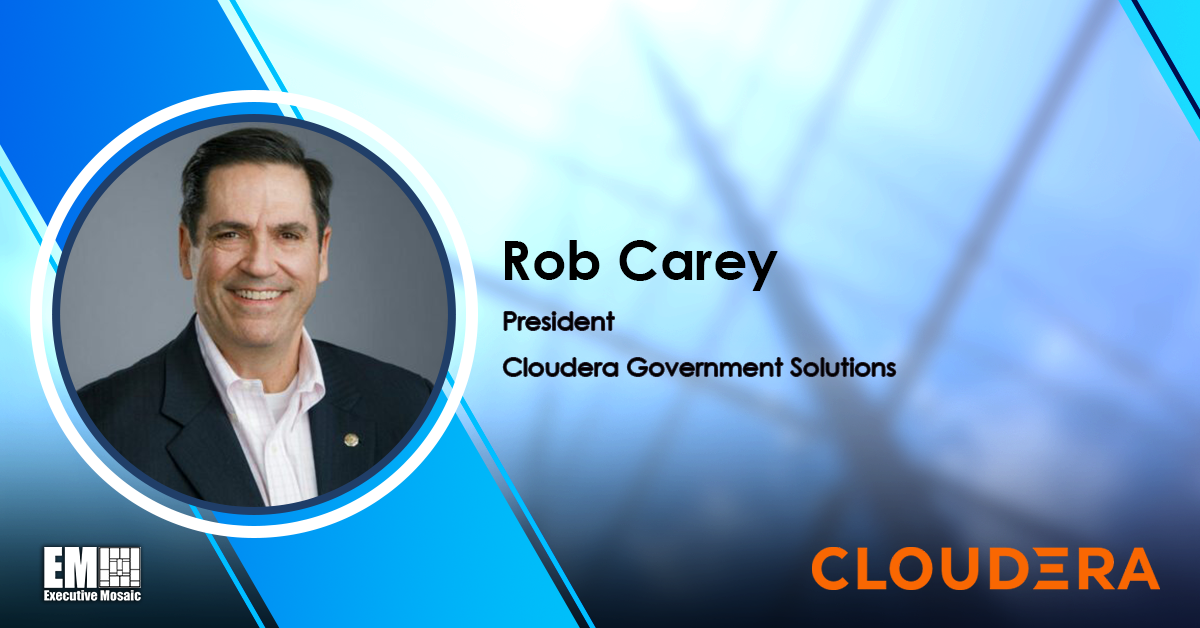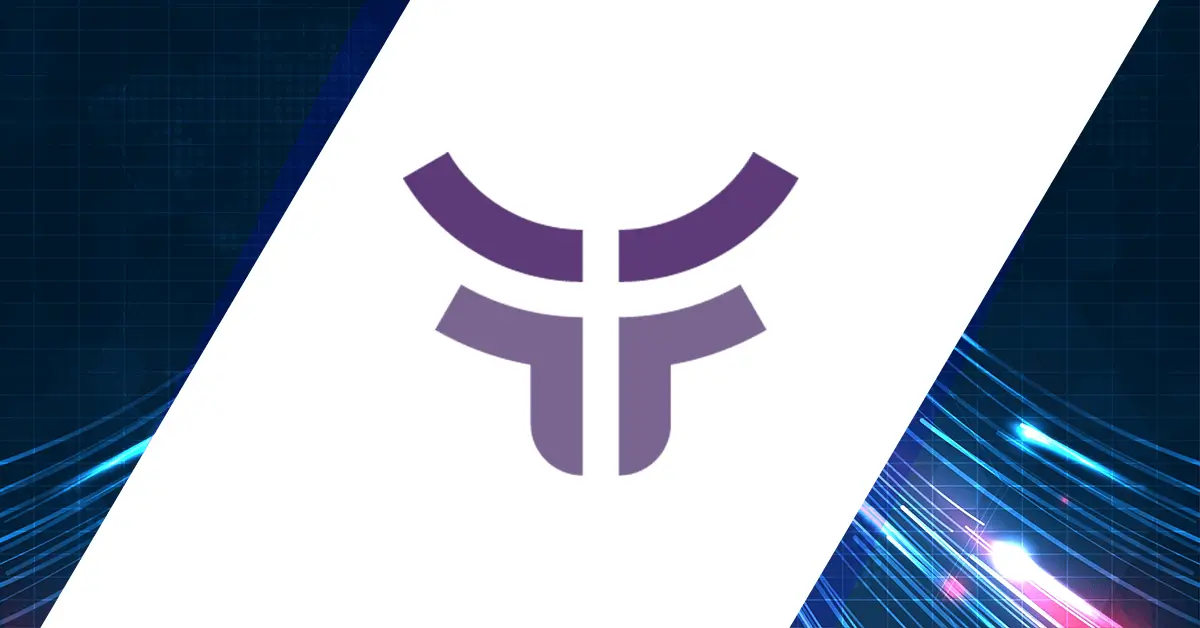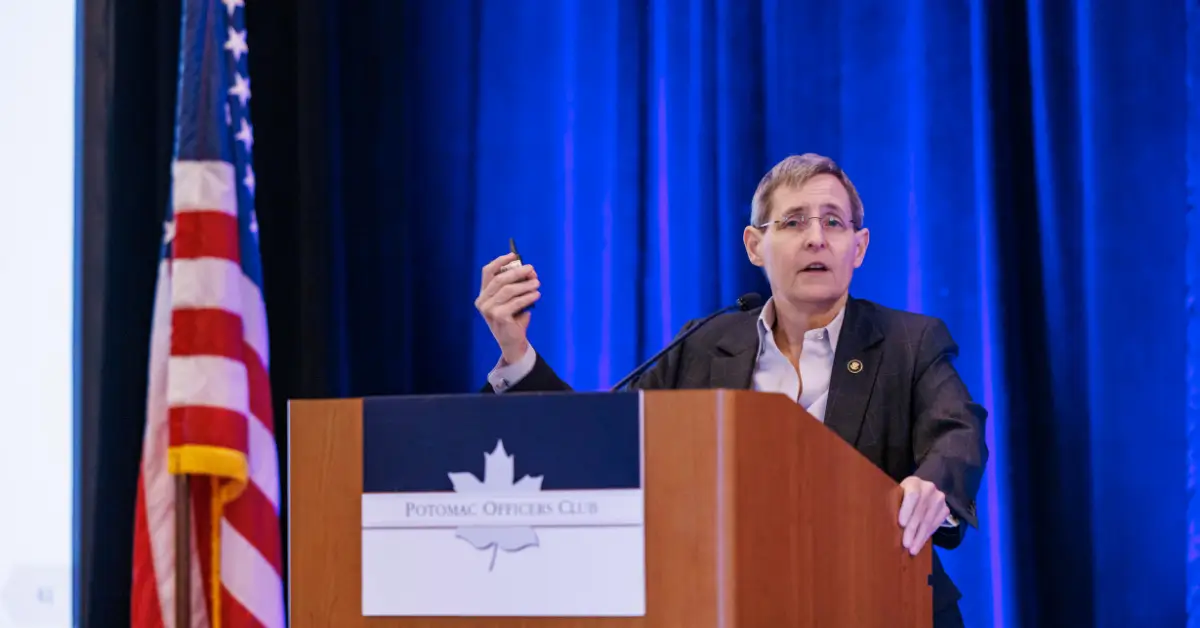The volume, velocity and variety of data that organizations are dealing with has increased dramatically in recent years. While all this data poses new challenges to leaders — especially in the U.S. government — it can also unlock troves of important organizational insights if collected, analyzed and harnessed with the right tools.
Rob Carey, president of Cloudera Government Solutions, believes “the future is the commoditization of data,” and he’s working to give his customers a one-stop shop for leveraging data to drive better, quicker and more informed decision making.
Carey’s career encompasses senior executive-level positions across government and industry and notably includes posts such as Principal Deputy Chief Information Officer for the Department of Defense and CIO of the Department of the Navy. During Carey’s tenure at the DOD, he oversaw the development of the department’s first ever cloud strategy, and led the modernization of standards for national security systems across government, giving him a wealth of knowledge and an intimate familiarity with the challenges and opportunities of using the network to drive mission success in government.
GovCon Wire sat down with Carey to learn more about the data challenges public sector organizations are facing, how emerging technologies are changing the data landscape, where Cloudera’s strategic vision is taking the company and more.
Read below for Rob Carey’s full Executive Spotlight interview.
GovCon Wire: What can you tell us about Cloudera’s recent growth initiatives? What do you hope to accomplish in the coming year, and are there any new markets that you’re keeping an eye on in the federal sector?
Carey: “Cloudera is developing an industry leading hybrid, multi-cloud data management capability. What that means is that it doesn’t matter where an organization’s data is or where it wants it to go. We’ll be able to ‘command and control’ the data from a single pane of glass and help locate, move, and analyze it then run state of the art analytics to help organizations make better, informed decisions and provide essential insights”.
We build software for complex problems. The first mile of the data journey (Locating and moving) is not a terribly complex problem, but it can be depending on the number of data sources and the volumes. Cybersecurity is a complex data centric problem, but moving log data from edge devices to a central location for analysis or to analyze in support of the customer, is but the first critical step.
Once necessary data is identified, the agency is in a good place to do curation, reporting, servicing and of course analytics (AI/ML). For example, understanding performance data from a fleet of aircraft or vehicles (when properly instrumented) can lead to better operational performance as well as savings associated with the cost of maintenance. Those types of projects help us solve the government’s real-life mission problems.
One of our big initiatives is to not sell a platform, but sell a solution. Platform based solutions require work to hone in on being a solution. Once we understand a specific problem, we deliver a solution that solves that problem — that’s what government agencies are looking for. In order to do all this, we’re building and delivering solution demonstrations of our code in real time. Almost everyone who’s seen our code operate in real time has said, ‘Wow, I need that, I want that right now.’ It’s been very eye-opening. As we do live demonstrations in front of government agencies, they can see we’re not selling a platform.
GCW: How are partnerships helping Cloudera expand its position in the federal marketplace, drive innovation and new capabilities and ultimately help complete your company’s mission?
Carey: “We go to market through partners, not directly. Carahsoft is our main distributor for our software, providing us flexibility to better serve the government while utilizing experts to manage the interface with Government agencies directly.
We also have partnerships with system integrators and Value Added Resellers. We’ve created an ecosystem of partners that helps identify a problem we can help solve and get a response back to the market as soon as possible to solve that particular agency’s problem.
These partners act as another set of eyes and ears that help us understand potential problems we can solve. They know our code, and what we’re capable of doing. We can provide professional services and the software to help deliver a solution on behalf of the customer. Partners broaden our ability to serve the government. We have to rely on partners letting us know what can and can’t be done, who needs what and where. If we have six or seven solutions in these demos, we know which one to take to which partners. So that’s helping keep our business growing.”
GCW: On that note, how can industry and the federal government collaborate better in order to accelerate innovation and meet emerging mission needs?
Carey: “This is a great question. When I was in government, I believed the relationship with industry needs to be very transparent. If industry knew what we needed done — in enough detail, they could help me get there. And no matter what the problem was, they could tell me how they might be able to solve it. Trust relationships between industry and government are essential.
Collaboration and transparency between government and industry is really crucial for the government to be successful. Agencies don’t always have the employees/skills.tools needed to solve operational problems that materialize.They must have support contractors, FSIs, OEMs and software vendors to collaborate and deliver an outcome on behalf of the government.
What sometimes gets in the way is the fear of making a mistake in an acquisition. There’s a fear of letting somebody know information they shouldn’t know. One of the challenges with the acquisition process is that at times, the “system” does not reward risk taking, it rewards protecting the government from liability , sometimes at the expense of timeliness and mission requirements.
Collaboration between government and industry can manifest itself in several different ways. For example, many agencies host industry days where they can provide what is needed and approximately when. This information helps industry help the government.
GCW: With the influence of emerging technologies impacting every aspect of business, how is Cloudera driving digital transformation efforts and staying ahead of innovation in the federal landscape for yourself and your customers?
Carey: “The technology train is an Acela…In the government five years ago, chief data officers didn’t exist. Chief data and artificial intelligence officers didn’t exist. This is now a position codified in law. These people are responsible for transforming their respective departments and agencies into data centric organizations, to use data to drive mission success, and that’s awesome!
The emerging technologies you’ve heard of like AI and ML, which are very complex — those technologies require somebody really skilled at data management or data engineering to evaluate, ‘Where does that play for me?’ And does the government have enough of those? Does industry have enough of those very smart people? The answer is ‘no.’
Digital transformation is going to be enabled by visibility into data and querying the data for insights that heretofore have not been seen. Until we have the ability to do that, and have the people that can also do that, we’re watching the game from outside the fence, and you really want to be on the field.
With emerging technologies in data, there are several things in the open source community that are becoming powerful enablers, like the Iceberg technologies, Ranger, Impala and Hive — they perform these nuanced functions that really are powerful in enabling customers to diagnose, modify and manipulate the data in a way that they need to get to this insight that will enable leaders to make decisions.
Transformation is really about becoming more efficient and effective as an organization. Can the agency perform functions using less resources to get a better answer? When you understand data is the key to all of that, you want to start focusing on, ‘How do I harness that data? What technologies will enable me to do that? Am I willing to use proprietary data? Should I use cloud computing to do that?’
Cloud computing is a powerful tool that’s applicable for certain things, but it’s not applicable for every workload. So it’s necessary to understand a little bit about the environment you’re engaging in, what decisions you want to make and the level of resources you have to start your digital transformation journey. The operational outcome you’re trying to get to is, ‘Am I serving more constituents with less money?’ And certainly data can be the center of that.
Once you understand data and have your workforce trained (or you have somebody doing it for you) you have the ability to run fast and really start providing insights to senior leaders that they didn’t have before.
The future, as I see it, is commoditization of data. Enabling many more people to access tools which harness big data to drive informed decisions.






